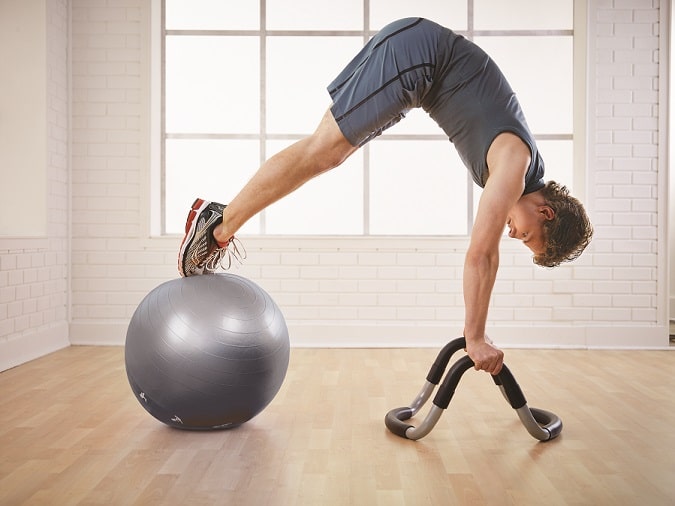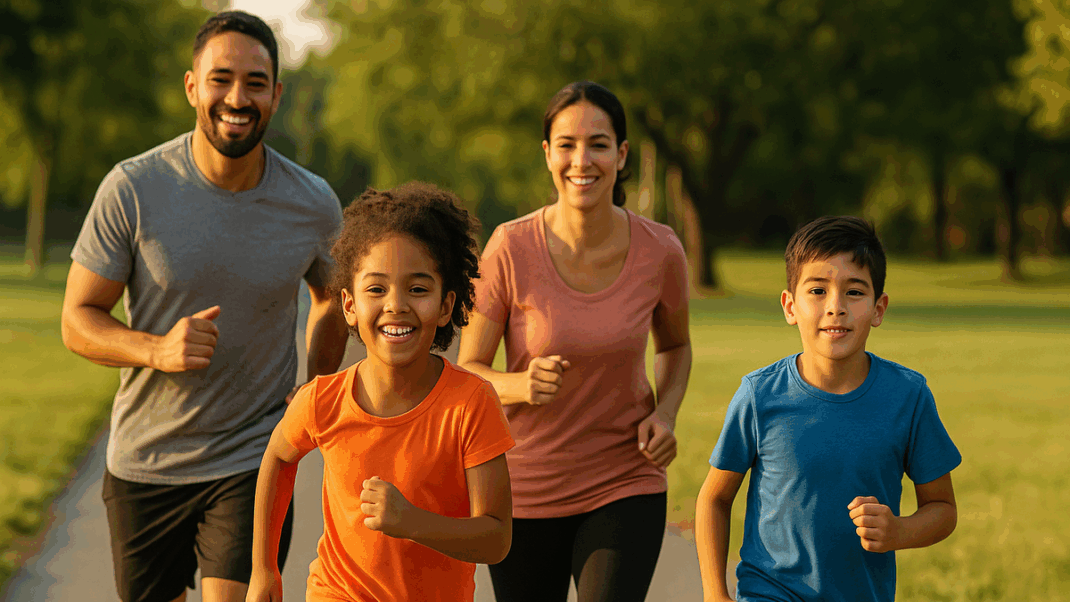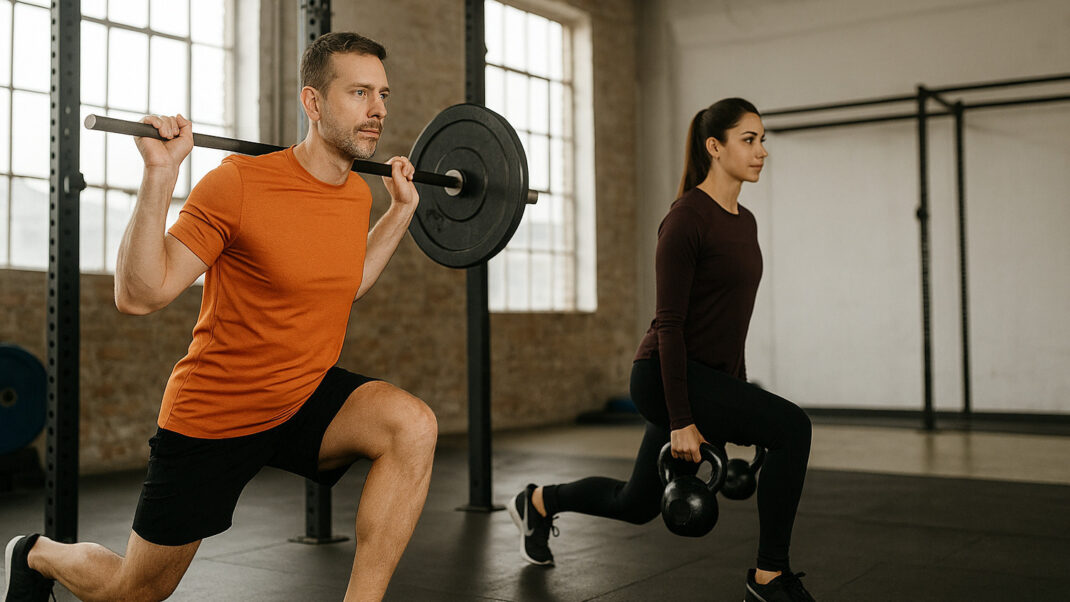What’s Hot in Equipment: Fitness Pro Favorites
From body weight to wearables, these are some of the most popular fitness devices and techniques of 2017.

Fitness professionals like their equipment—from "tried-and-true" to "oh, so new." And equipment companies like to fill convention halls with fresh gear to help trainers and clients hit their goals. Of course, fitness pros also enjoy new gadgets for the pure thrill of them—and will sometimes go for equipment that targets a fun goal over a hypertrophy goal, for example.
We talk to trainers about their favorite tools and techniques (see the main sidebar) and profile some of the most fascinating fitness products hitting the market this year.
All About the Wearables
Past years have seen breakout fitness equipment stars such as the Nintendo® Wii™, the Step®, the Pilates reformer, the TRX® Suspension Trainer™, the slide board and even the Shake Weight®. This year the star seems to be a category—wearable technology. While fitness trackers, pedometers, heart rate monitors and smartphones have been around for a while, the diversity of features and capabilities in this group is exploding.
Wrist-worn smartwatches and trackers have evolved into distinct "wearable" categories. And CNET now divides its favorite tracking devices into four discrete headings: best fitness tracker, best smartwatch, most stylish fitness watch and best GPS running watch (Stein & Graziano 2017).
It's no longer enough to count your steps or measure your heart rate; today's wearable trackers can correct your form, help you count reps, provide a fairly accurate caloric burn rate, stream notifications to you, recognize a new range of exercises (including yoga moves), detect motion on multiple axes, store freestyle exercises, deliver quantifiable strength data (for free weights, pulleys or even body weight) and send payment reminders. Even our language has evolved to keep pace. Ten years ago it wasn't common to hear gym-goers discussing OLED touchscreen displays and motion sensor setups (gyroscope, magnetometer and accelerometer) that track movement in a 3-D space, much less understand what those terms meant, but now this kind of discussion happens in Facebook groups that appeal to fitness lovers.
Want some neurostimulation with your workout music? For about $700, you can get Halo Sport headphones that stimulate your motor cortex during athletic training. This increases the excitability of motor neurons, putting your brain into a "hyperplasticity/hyperlearning" state. In plainer terms, your headphones can potentially help you accelerate gains in "strength, explosiveness, endurance and muscle memory" (Fingas 2016).
Some trainers don't want the bulkiness of headphones, so they prefer earbuds. Headphone specialist Jabra comes through with a headphone that has a heart rate tracker built into the part that goes in the inner ear. Want to calculate your VO2max while walking a mile? The earbuds can do that, plus sync up with your phone apps to offer voice-guided workouts. Or you can skip the app and get another Jabra model that has an automatic rep-counting mode, plus tracked and timed crosstraining exercises built in (Sawh 2016).
Probably geared more toward personal trainers than group fitness leaders are two tech products that are not exactly wearable, yet are closely aligned because they're designed to touch the body. One is a phone-sized apparatus called the Skulpt® Chisel; when placed on different areas of the body, it measures body fat and muscle quality via a small current to both the muscle and its surrounding fat. The other is a muscle and joint pain-relief device from Omron® that attaches to the body via gel pads which provide heat and/or transcutaneous electrical nerve stimulation (Sawh 2017; Omron 2016).
Remember the headlines when actor Andy Serkis filmed his role in Lord of the Rings in a motion-capture suit? It all seemed so futuristic and fabulous. Well, all fitness pros can now be Serkis, because similar products are on the market, and they can measure your breath, heartbeat and muscle exertion, as well as your motion (though without the cameras).
Your next running shirt might be embroidered with e-fibers that collect information from your body and send that info to your smartphone. At Ohio State University, the department of electrical and computer engineering has a Wearable and Implantable Technologies Research Group that is working on cheaper, faster, more reliable "wireless and very-low-power implanted and wearable devices for unobtrusive monitoring of several bodily functions and vitals" (OSU 2017).
While "smart" clothing has been spotted at fitness conventions in the past few years, 2017 may just be the year when this textile category goes mainstream. With biosignal-monitoring garments replete with sensors and Bluetooth-enabled core chips that can collect, record and transmit data in real time from your entire body, the days of clipboards and workout cards may fast be coming to an end.
And when you're done with your workout, it's even possible to wear a nightshirt infused with electromagnetic frequencies to increase blood flow and oxygen intake, thus leading to deeper levels of restorative REM sleep. And it's well known that a good night's sleep is an important part of being fit. Before you scoff, keep in mind how funny people thought it was to see Dick Tracy talking to his two-way radio wristwatch in the mid-'60s. Yet that show inspired the makers of the Apple Watch. Currently being tested at U.S. Department of Defense labs, your next nightshirt could give you low-frequency pulsed electromagnetic field therapy (AEG 2017).
Water Yes, Pool No
Whether you call it hydro-inertia or dynamic-fluid resistance training, equipment made with water (vs. for water) is so cool, it's hot. For example, Surge® has a new, 30-inch water-filled training device that looks like an oversized razor clam with handles. Trainers use it with clients who need a workout with balance and stability components to further challenge their core and movement patterns. Since it's up to the user (or trainer) to determine how much water goes into the device, the level of difficulty can be altered even if the exercises stay the same.
For those who prefer their equipment to be more like a round clam, the popular Kamagon® Ball is a destabilized handheld weight that uses water to create resistance.
New Twists on Old Gear
Step right up. Step risers (not the bench) have seen innovative uses, serving as ball holders for Drums Alive® or being integrated into a pushup, but now some group fitness leaders, especially in the dance realm, are using specially made risers as the main piece of equipment in the class, sans Step riser. What makes these risers "special"? In addition to raising the height of a step, they have a fully covered top, allowing users to dance or climb directly on top of them. Sort of a mini-step, if you will.
Rings of power. Wonder what gymnastics and suspension exercise have in common? The answer is gymnastic rings, which can now be found on equipment like the TRX® Duo Trainer. By themselves, both suspension exercise and gymnastics are established modes of training, yet adding straight, strong, secure grips to the suspension mix has made it more exciting for those eager for a new challenge.
Colorful and powerful. Some clients (and possibly their trainers) are visually drawn to colorful pieces of equipment in bold shapes, especially if they bear a resemblance to Skittles. Who wouldn't want a royal-blue water-filled stability ball, brick-red clubs or a lime-green set of pushup handles? Sometimes just adding color makes a product more exciting.
Merrithew™ is always at the forefront when it comes to reinventing equipment for creative workouts. The company's new "muscled-up" version of the Halo® Trainer Plus combines the Halo with a stability ball for a heck of a core workout. "Muscled-up" means the device can withstand up to 800 pounds of pressure.
Looking Ahead
Whether your next purchase will be a body-composition scale in a bold color, an app that lets you know when to hydrate, a pair of socks that can discern when your shoes need replacing, or a free weight that calculates exactly how many more reps you can do with perfect form, it's apparent that the future is here. Things that just a couple of years ago seemed to exist only in the imagination are now everyday tools for fitness professionals. Who knows? Maybe the thing you're dreaming of now is about to hit the market.
We talked to trainers across the U.S. about their favorite equipment. Find out how they're using the human body as a resistance tool, building strength with aerial silks, doing standup yoga in swimming pools, and more:
Body-Weight Training: Keeping It Simple
For all the fitness tools out there, none is more accessible than the human body. That's why Renah Jones, owner of Dragonfly Fitness & Training, in St. Louis, specializes in body-weight training.
"We keep it simple at my studio, using mostly kettlebells, dumbbells, barbells, suspension [exercise] and body weight. We just added the body-weight skills class to our roster, and our ladies are loving the opportunity to learn and work on exercises such as the pistol squat, hanging leg raise, one-arm pushup, handstand and pull-up.
"Mastering your own body weight is certainly a skill and takes great strength. It's never boring, and our clients get excited when they reach their goals. Also, the strength that we build in this class carries over perfectly to other classes where we use weights."
Another great advantage to body-weight training is the cost of the core equipment: It's free. Of course, the market offers dozens of bars, bands and other accessories that complement body-weight training, and they're definitely more practical and portable than a barbell-and-bench setup or a resistance training machine.
Furthermore, body-weight training can be a nonthreatening way for exercise newcomers to ease into a strength training regimen, particularly in a gym where hard-bodied regulars are handling 200-pound barbells as if they were toothpicks. Throw in the fact that body-weight training increases lean muscle mass, especially when combined with aerobic activity (Willis et al. 2012), and its popularity makes complete sense. Take a 2011 meta-analysis in The American Journal of Medicine, for example, where researchers looked at fitness results for adults over 50. They found that with an average of 18–20 weeks of progressive work—with an emphasis on body-weight training—adults can add 2.42 pounds of lean muscle mass and improve their overall strength by 25%–30% (Peterson & Gordon 2011).
Aerial Silk Exercises
Jennifer Howes of Scottsdale, Arizona, became a quick convert to small-group aerial silk classes, where exercisers dangle from suspended silken fabric. "I loved that I could climb, invert and train my body through different orientations to the ground," she said. "To me, this is the next progressive step of suspension exercise. Yes, students gain muscle and reduce fat and inches. They also develop [greater] kinesthetic awareness. Women especially like the hypertrophy without the bulk."
Howes praises the mental aspects as well. "The dynamics of this small-group class have shown me things I have never seen in my 35 years of teaching. Relationships have developed that go beyond the walls of the studio." She has observed the confidence that some of her female participants gain, especially when they bring their husbands and proceed to "outperform" them.
Recovery Equipment
Admired by many and despised by some, foam rollers have evolved from the original tubes and are now available in a variety of sizes, shapes and textures: foot rollers, smooth massage balls, high-density "sticks" and handheld T-shaped rollers, for example. Trainers and athletes used to be the primary users of foam rollers, but now fit pros incorporate them into the recovery phase of many clients' workouts—both in solo sessions and with groups.
Rachel McDonald, owner of Fitness With Rachel in Santa Barbara, California, explains her introduction to one foam roller: "It was the third day of the (2016 IDEA® World) Convention, the second day of the trade show, and my body needed some recovery," McDonald recalls. "So I stopped at the first foam roller booth I happened to see. I had massive knots in my upper back, and the Rollga roller got right into the exact areas that needed attention. I bought one on the spot for myself. After teaching 8–20 hours per week, I need to help my body recover, and this foam roller is effective at that." McDonald says her roller has also reduced the number of tension headaches she gets.
McDonald has added the foam device in her small-group classes. "I have clients of all ages who either don't know how to use a foam roller or don't take the necessary time at home, so I offer three classes a week because I want my clients' bodies to be the healthiest and happiest they can be."
Stoked on the Water
Doing yoga on a standup paddleboard (SUP) is catching on with water lovers from coast to coast. Julie Weidenfeld, chief wellness consultant at TravelFit in Delray Beach, Florida, is one of them. "I started doing SUP yoga about 2 years ago, then decided to try and teach my own version of paddleboard fitness to clients—interval training. After several attempts at holding lake classes, with the erratic summer weather here, I switched to pool classes, as pools are common here in South Florida."
Standard SUP boards are impractical for classes, so Weidenfeld opted for inflatable BOGA FITMAT boards that roll up into carrying bags. "The FITMAT boards I use come with grommets to tether to pool lines, and deflation is incredibly easy. Carrying and inflating them has become part of my own personal preclass warm-up." Weidenfeld loves the workout also because it appeals to clients with balance issues or restricted range of motion.
Tried-and-True Tools
A good row. Betsy Kortebein, an ACE-certified personal trainer and group fitness instructor from El Dorado Hills in California, has been incorporating indoor rowing into her workouts. "Coaches have been using [rowers] for training and improved power measurement since the 1950s," says Kortebein, "but I have only recently embraced the rower as part of my routine."
When Kortebein moved and started teaching at a new club that offered indoor rowing, she tried it and was impressed with the results. "I love focusing on my technique, watts and timing during distances ranging from 100 meters to more than 2,000 meters. The rower is a great low-impact, total-body workout to complement my HIIT and running activities."
She also found that it relieved some of her shoulder joint issues and helped to further develop her upper-body strength. She advises trainers to take care when putting clients on an indoor rower, however: "For those who start with a weak core, start out slow, limit the time spent on the rower and focus on technique until the client acclimates to the equipment."
On the ropes. Marcos Landavazo, a tennis pro and exercise specialist at Rancho la Puerta in Tecate, Mexico, is a fan of heavy ropes (also known as battle ropes): "Even though they've been around for a while, they are still a great exercise tool. Some of my clients want to have a super workout in a short, 10- to 15-minute time frame, and the ropes provide that. And once clients master the moves, they can move up in rope size and therefore continue to challenge their bodies."
Originally drawn to try heavy ropes after seeing athletes from myriad sports using them, Landavazo is now hooked. "When I work with them consistently, I get a feeling of overall strength gains, which is great."
Hoop dreams. Kymberly Williams-Evans, MA, a functional-aging specialist in Santa Barbara, California, likes using the Hula-Hoop when working with older adults. "I took a workshop at the 2016 International Council on Active Aging® Conference with Cammy Dennis and Jessica Pinkowski, and they demonstrated a whole range of seated and standing exercises using a Hula-Hoop. Not a single move was cardio, which is what most people think of when they pick up a hoop. I came back home and designed a whole functional workout for my elderly, frail mother as a way to help her stay mobile and independent."
Small-group leaders are always on the lookout for equipment that is affordable and easy to understand, use and transport. Group exercisers crave gear that helps with flexibility, balance, coordination, endurance and strength.
In particular, fitness pros prize equipment that can be deflated or folded to pack into small storage areas like cars or closets. Here's some gear spotted recently:
- inflatable elliptical small balls
- stability swing poles
- tubing (durability and handle comfort are regularly updated)
- bands with fabric sleeves that increase user comfort
- small, lightweight massage sticks
- collapsible, adjustable speed hurdles
- items that focus on push-pull movements
- "bells" filled with sand
- scarves for use with children and older adults to improve kinesthetic awareness and proprioception
and other products that promote range of motion while releasing stiffness and tension
References
AEG (Active Edge Gear). 2017. Clinical trials. Accessed Feb. 10, 2017. www.activeedgegear.com/pages/clinical–trials.
Fingas, J. 2016. Brain–altering Halo Sport headphones are available to everyone. Engadget. Accessed Feb. 13, 2017. www.engadget.com/2016/11/16/brain–altering–halo–sport–headphones–are–available–to–everyone/.
Omron. 2016. Heat Pain Pro TENS Unit. Omron Healthcare. Accessed Feb. 10, 2017. https://omronhealthcare.com/products/heat–pain–pro–tens–unit–pm311/.
OSU (Ohio State University). 2017. Wearable and implantable technologies. Kiourti Research Group, department of electrical and computer engineering. Accessed Feb. 10, 2017. http://u.osu.edu/kiourti.1/.
Peterson, M., & Gordon, P. 2011. Resistance exercise for the aging adult: Clinical implications and prescription guidelines. The American Journal of Medicine, 124 3, 194—98.
Sawh, M. 2016. Jabra Sport Coach Special Edition review. www.wareable.com. Accessed Feb. 17, 2017. www.wareable.com/headphones/jabra–sport–coach–special–edition–review.
Sawh, M. 2017. Work out smarter: Best gym trackers and wearables to look out for. http://www.wareable.com. Accessed Feb. 10, 2017. www.wareable.com/sport/the–best–gym–fitness–tracker–band–weights–wearables.
Stein, S., & Graziano, D. 2017. Best wearable tech of 2017. www.CNET.com. Accessed Feb. 10, 2017. www.cnet.com/topics/wearable–tech/best–wearable–tech/.
Willis, L.H., et al. 2012. Effects of aerobic and/or resistance training on body mass and fat mass in overweight or obese adults. Journal of Applied Physiology (1985), 11 (12), 1831—37.





